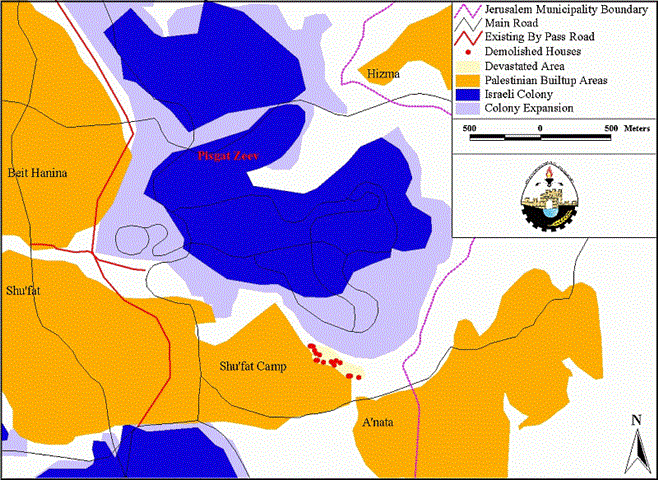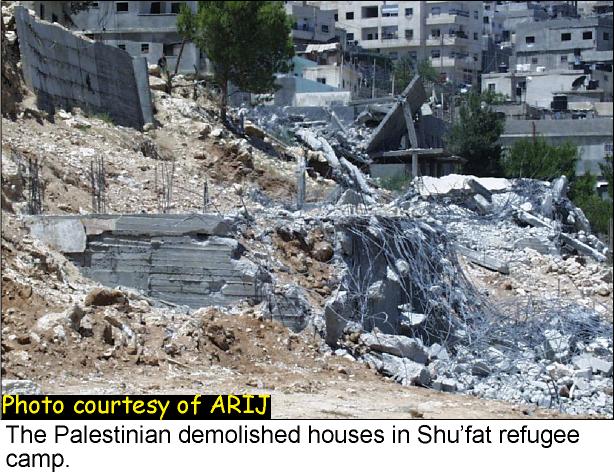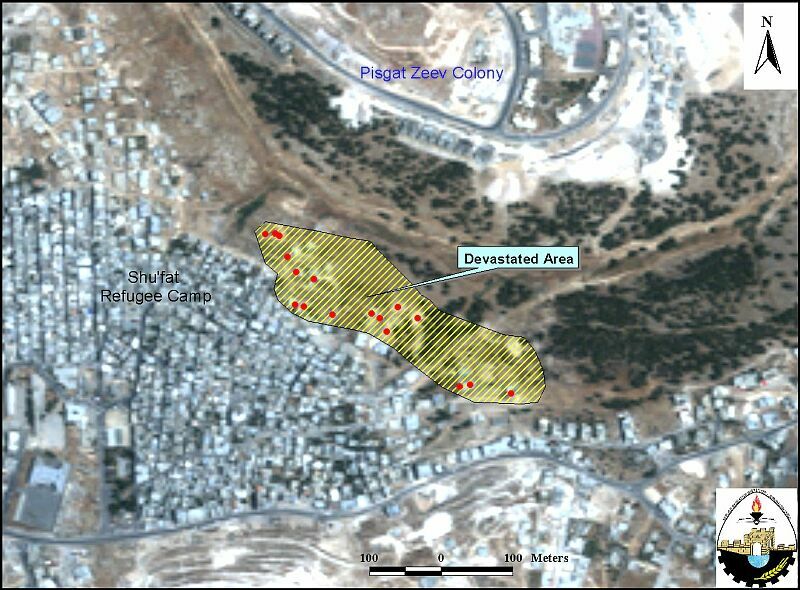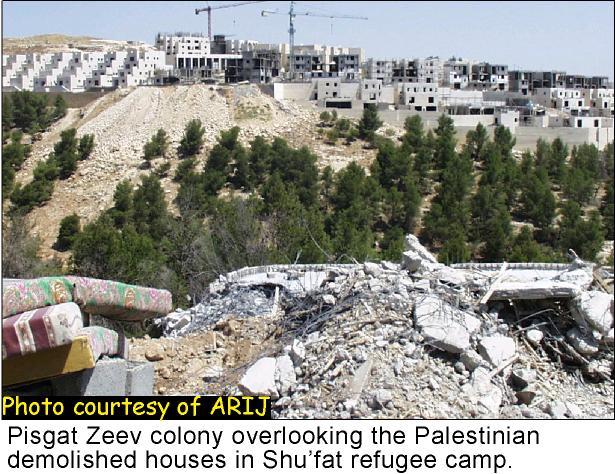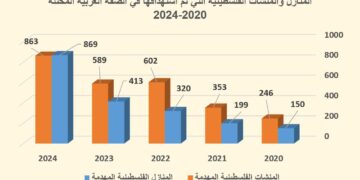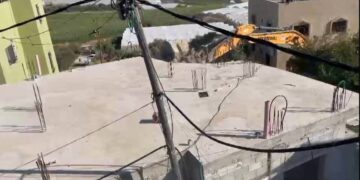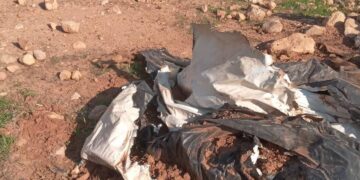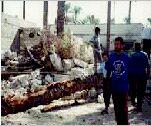Since Ariel Sharon's return from his trip to Washington in early July, Israeli authorities have mounted an intense campaign of house demolitions near Hebron in the West Bank and in the Palestinian cities of Khan Yunis and Rafah in the Gaza Strip. On the 9th of July, Palestinians of the Shu'fat refugee camp also suffered the destruction of their homes by Israeli bulldozers. Shu'fat lies just north of Jerusalem, within the Jerusalem Municipal Boundary and between the two Jewish settlements of Pisgat Zeev and Givat Shappira; see map.
At 10:00 am on July 8th, the Israeli authorities posted demolition notices on the doors of 25 houses at the northeast edge of the Shu'fat refugee camp, stating that the residents had 48 hours to leave. With no chance to appeal the orders, the owners prepared for the worst. Destruction came earlier than expected. At 7:30 am the next day, less than 24 hours after posting the notices, Israeli bulldozers arrived at the homes and began their work. The bulldozers were accompanied by at least 80 Border Police and regular police, some mounted on horseback, and dozens of military jeeps that closed off the camp and violently suppressed any resistance to the demolitions. Some Palestinians attempted to halt the bulldozers by lying down in front of them or sitting inside the targeted houses. But they were carted away by the police. Some were beaten, as was the medical staff that came to their aid. Israeli protesters who arrived on the scene to impede the demolitions were also treated roughly. In all, ten people were injured and one seventeen year-old Palestinian was arrested while trying to protect his home.
By 12:30, the Israeli bulldozers demolished seventeen Palestinian houses (14 inhabited and 3 uninhabited), consisting of 25 apartments for the housing of approximately 122 people; see photo 1. The homes ranged in size from 120 square meters to 700 square meters and had a monetary value of 30,000 NIS ($7,500) to 250,000 NIS ($62,500) each; see satellite image.
The scene after the demolitions strikingly revealed the injustice and racism of Israeli colonization in the West Bank and Gaza Strip. From the site of the Palestinian homes lying in rubble one can look just a few hundred meters to the adjacent hilltop where construction of modern apartments in Pisgat Zeev settlement is proceeding at a rapid pace; see photo 2..
The demolitions at Shu'fat refugee camp must be understood in light of Israel's discriminatory Municipal planning policies in Jerusalem, which are guided by the demographic aim of reducing the number of Palestinians residing in occupied East Jerusalem while increasing the number of Jews living there in order to assure Israeli control of the city. In 1973 the inter-ministerial committee declared that the ratio of 73.5% Jews and 26.5% Palestinians that lived in Jerusalem in 1972 must be maintained or shifted in Israel's favor.
Israel carries out this goal by implementing a number of discriminatory laws and practices. In Palestinian neighborhoods in Jerusalem the allowed construction height and the allowed density level per dunum is lower in comparison to Jewish settlements in East Jerusalem and housing in the western parts of the city. The growth of Palestinian neighborhoods is further restricted by declaring large areas of open space zone green where construction is strictly prohibited; that is until the Israeli authorities decide to us it for a settlement. In addition, the Israeli government rarely constructs public housing for East Jerusalem's Palestinian residents. Instead, construction is almost always a private endeavor, in contrast with the elaborate financial incentives that are granted to settlers.
These policies are complimented by the practice of rarely giving Palestinians the housing permits that are needed for legal construction. But in the face of crowded living conditions, caused in part by the discriminatory policies outlined above, many Palestinians decide to provide for the growth of their families by building without the permits. This was the risk taken by the residents of Shu'fat refugee camp. Unfortunately, for the crime of disobeying unjust laws in order to escape unbearable conditions and provide the simple right and necessity of proper housing for their families, these refugees join the ever-growing list of Palestinians to suffer the loss of their home to Israeli bulldozers.
The demolitions in Shu'fat, coming at a time when the United States and other world powers are attempting to establish a cease-fire between the Israelis and Palestinians, show that the central obstacle to a resolution of the conflict is not the violence of guns but the violence of occupation.
Prepared by:
The Applied Research Institute – Jerusalem


